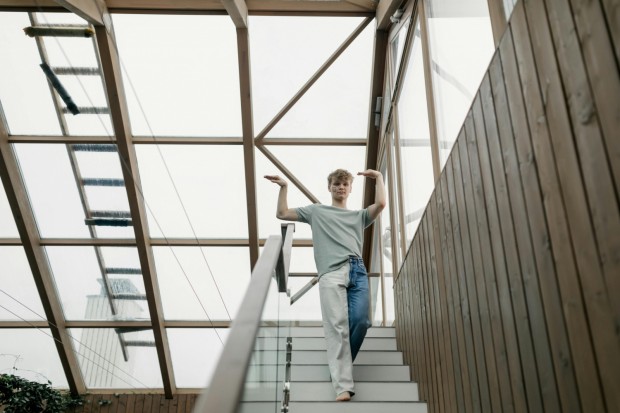Glass is well-liked by architects and designers looking for modern and minimalist designs since it is also durable and flexible in addition to its aesthetic qualities. The material's transparency reportedly enables substantial natural light to illuminate interior spaces, reducing reliance on artificial illumination and conserving energy.

(Photo : Pexels/Alena Darmel )
1. Windows and Facades
One of the most important functions of windows is to let in natural light and fresh air while shielding occupants from the elements, including wind, rain, and cold. With the help of specialized multipurpose designs, it is possible to accomplish most of these objectives typical of windows. Window and façade systems that are sophisticated combine a variety of technical requirements with the opportunity to develop creatively. Glass' potential extends beyond enhancing transparency and living standards; it can also accentuate the vibrancy of reflective surfaces and the existence of structures.
2. Glass Partitions
Glass partitions are frequently utilized within commercial structures to divide spaces without obstructing the flow of light or producing a feeling of separation. They can be found in offices, retail businesses, and hospitality establishments. Moreover, when arranged in a space, these walls can be transparent, frosted, or tinted, and they can also be movable, which provides a great deal of freedom.
3. Atriums
The term 'atrium' refers to significant, open areas within a building and usually have roofs with a glass roof or enormous skylights. As mentioned, an optimistic and inviting atmosphere is produced due to their ability to let in a great deal of natural light. As a result of their ability to perform a variety of roles, such as serving as lounges, conference areas, or circulation spaces, they contribute to the overall aesthetic and functionality of the structure.
4. Balustrades
In a building, glass can be used securely for balustrades, railings, and obstacles, allowing natural light to enter open areas. Accordingly, light can penetrate through glass balustrades, eliminating the requirement for artificial lighting and providing a natural supply of daylight. When installed in an office or public facility, glass railings and barriers give the impression of an open floor plan.
Also Read: Dubai's Multi-Million Residential Project Unveiled, Offering Over 1,000 Units
5. Building-Integrated Photovoltaics (BIPV)
Through the use of BIPV solutions, sustainable and energy-efficient buildings can be created. Architects, owners, and developers of new constructions and external envelope renovations are reportedly showing a growing interest in solar power as a means of achieving higher energy ratings and reaching Nearly Zero Energy Building (NZEB) levels for commercial buildings.
6. Dynamic Glazing
It is essential to ensure that a facility's residents are comfortable and healthy at all times. The increased productivity, attention, and creativity of occupants can be attributed to the presence of natural light and continuous vistas of the outdoors.
7. Flooring
The installation of glass flooring is a more extensive project, but it has the potential to produce floors that are not only reflective but also distinctively lighted, which you haven't witnessed or experienced before.
8. Standalone art installations
Constructing independent art installations that use architectural glass is a prevalent activity among individuals actively involved in the commercial art scene. Glass can create a lovely and peaceful environment for all people in its presence, which can grab attention from many kilometers away. Thus, architectural glass is widely utilized in the construction and erection of freestanding art installations, which is a preferred option among architects and artists seeking to make a statement.
Related Article: 6 Common Hazards in the Excavation Process







